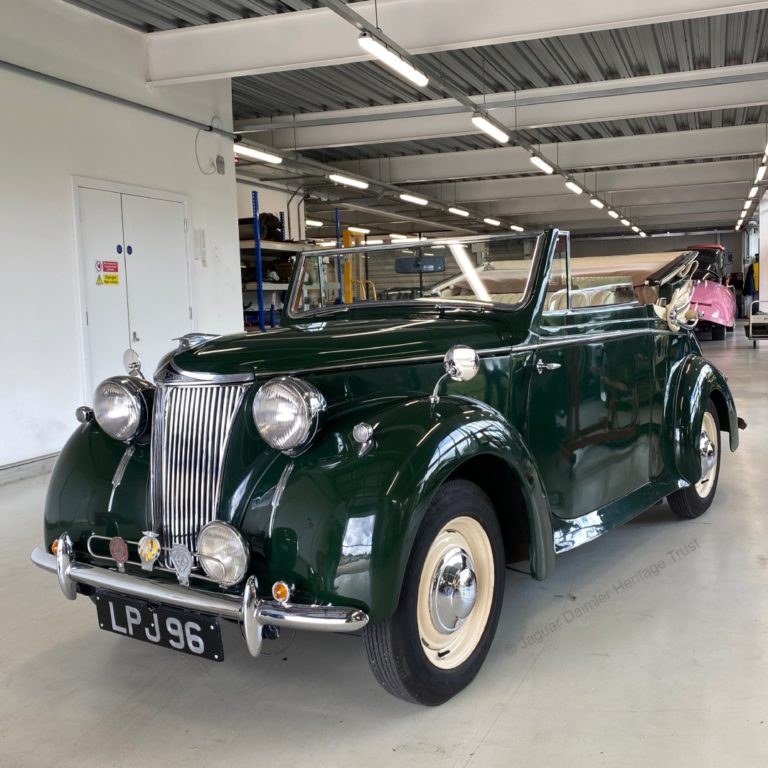
1947 Lanchester LD10 Abbott Bodied Convertible LPJ 96
At the end of 2022 the Jaguar Daimler Heritage Trust acquired this Lanchester LD10 Convertible which was built in 1946/7, first registered on 17 August 1947 and had been in the ownership of the same family since 1967.
Lanchester had started planning the LD10 before World War Two with a planned launch date of 1940 but it wasn’t to appear until 1945. The planned Lanchester Ten had an all-steel body made by the Briggs Company. In keeping perhaps with the times, this was rather plain and austerely finished, with a painted metal fascia, and the styling has been compared to a London black cab. It was a complete contrast to the large, luxurious cars that Lanchester had once manufactured. In 1950 a revised model with a body made by Barker was launched and built until production stopped in June 1951.
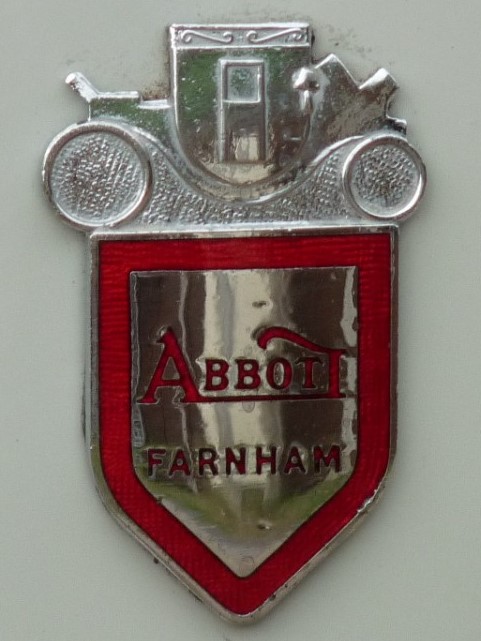
In 1946 the coachbuilders E D Abbott of Farnham, bought two chassis on which they produced two convertible versions of the LD10, this is one of those two – the other one also survives.
We were approached by the owners who had completely restored the car and decided it needed to go to a new home where the restoration work would be appreciated and it would be properly looked after. Our initial thoughts were that we already had one LD10 in our collection and didn’t really need a second one. However our 1950 LD10 is one of the later Barker bodied saloons and while it runs and drives, the bodywork is in poor condition and not good enough for us to put on display. We have neither the time nor the funds to undertake the necessary bodywork and having been to view the Abbott convertible we came to the obvious conclusion that it was worth acquiring and displaying, and we would sell our Barker bodied car to help fund the purchase.
A deal was struck and we collected the car at the beginning of December, delivering it to our workshop at the British Motor Museum at Gaydon. After a brief check over and fixing one light that wasn’t working, the car duly passed its MOT on 12 December 2022.
We have no information about its history for the twenty years from its registration in 1947 until 1967 when it was bought for £25 by James Stimpson from its previous owner in Nuthall, Nottingham. This very nearly didn’t happen, as James was planning to emigrate to Australia under the Government’s Assisted Package programme where someone could emigrate for the princely sum of £10. This programme was run jointly by the Australian and British governments from 1945 to 1972 in a bid to increase the population and grow the Australian economy. Australians refer to the scheme and the immigrants as ‘Ten Pound Poms’.
For whatever reason, James decided not to go, added another £15 to his £10 fare and bought the Lanchester. Long before the days of considering these cars as classics, he ran it as his everyday car for about three years including a number of camping trips to North Wales where he eventually decided to live. One fateful day in 1970 the car developed an engine problem and was taken off the road with a plan to fix it ‘at some point’. A number of house moves ensued and the car moved from garage to garage.
James never did get round to repairing the engine and eventually in 1986 decided it was time to let the car go. James’ sister Jean and her husband John West had always known about the car and as John knew it was one of only two built he decided he would take on the restoration himself rather than let it leave the family.
To help fix the engine, he sourced another LD10 as a donor vehicle and cannibalised the parts he needed. Fortunately there were no major problems with the pre-selector gearbox and he only had to replace one of the ‘bands’. It passed its first MOT for many years, on 2 April 1990, and John and his wife Jean started to use the car. Although the car was MOTed and running, for some of the time it had been stored under a tarpaulin and the car had suffered some water damage. There was evidence of rust on some of the steel panels and the chassis, and the convertible hood and the interior had also suffered so John decided it merited a full restoration.
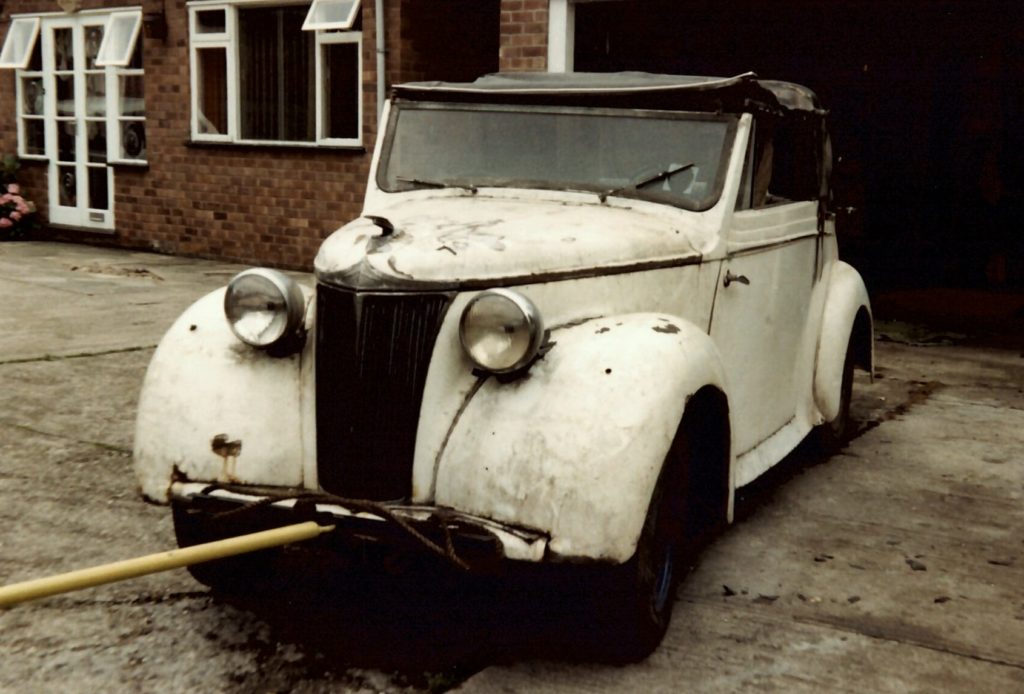
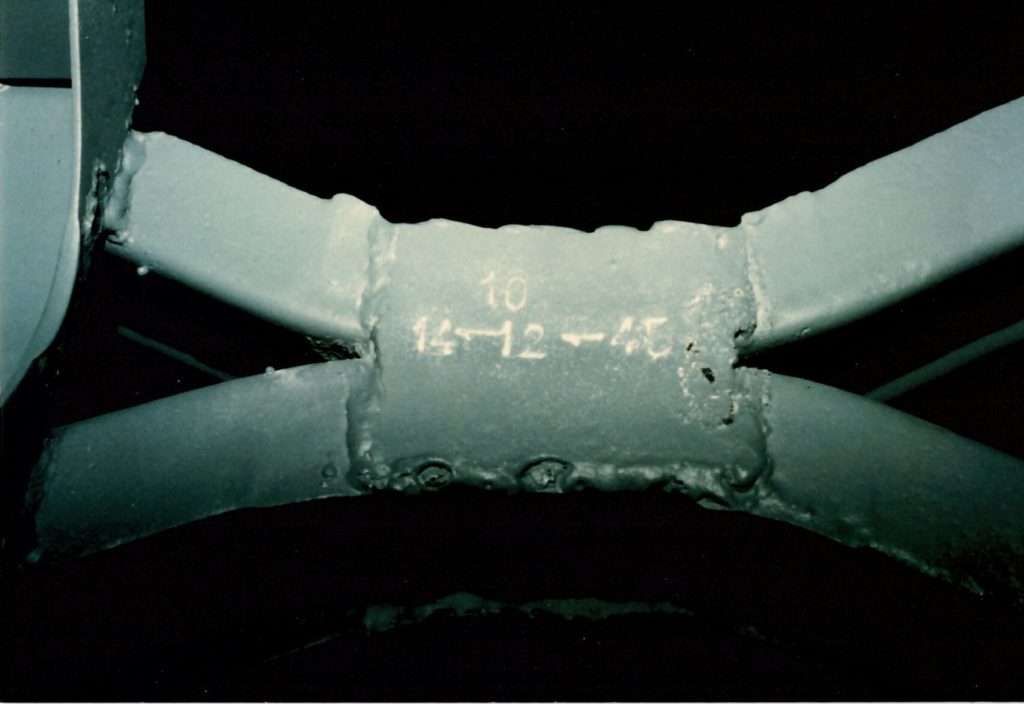
He started by removing the body from the chassis which on inspection proved to be worse than had been expected. Part of the rear chassis had almost rusted away which needed new steel letting in and he had to remake and weld on new spring hangers. While cleaning the chassis ready for a full repaint he exposed a date stamped in the centre of the cruciform section showing that it had been laid down on 14 December 1945.
The Abbott body is steel from the front bulkhead forwards and the rear is built from aluminium panels over an ash frame with the bespoke convertible top attached. Much of the ash had rotted away and John used what remained as patterns to make new pieces. The hood and entire interior were beyond salvaging so complete new seats were made, including new springs by a local bed maker/upholsterer and recovered in pleated cream leather. The door cards and rear quarter panels were remade and covered in the same leather.
A new set of carpets were made up in light brown, with cream leather binding, and this was also used to cover the kick panels and the lower section of the doors. Having re-built the hood frame and made sure it folded properly, a new hood was made, covered in the same leather and a new hood liner installed.
He had a new wiring loom made up to the original specification, from Lanchester documentation. He resisted the urge to replace the dynamo with a modern alternator but took the precaution of installing a larger battery under the rear seat. He installed a couple of minor upgrades to make the car more usable and safer in modern traffic – installing an electric petrol pump to prime the carburettor instead of relying on the mechanical pump, and added a set of discrete indicators to the front and rear bumpers to supplement the trafficators.
Since completing the car and the re-MOT testing, John and Jean took it to a number of local car shows and won a few prizes – including the “Mayor’s Choice” at Twin Lakes Car Show on 21 April 2013, Best Restored Car in Show at Crich Tramway Village in 2015 and finally securing The Concours Trophy in 2022 at the Derbyshire County Show after coming second on previous occasions.
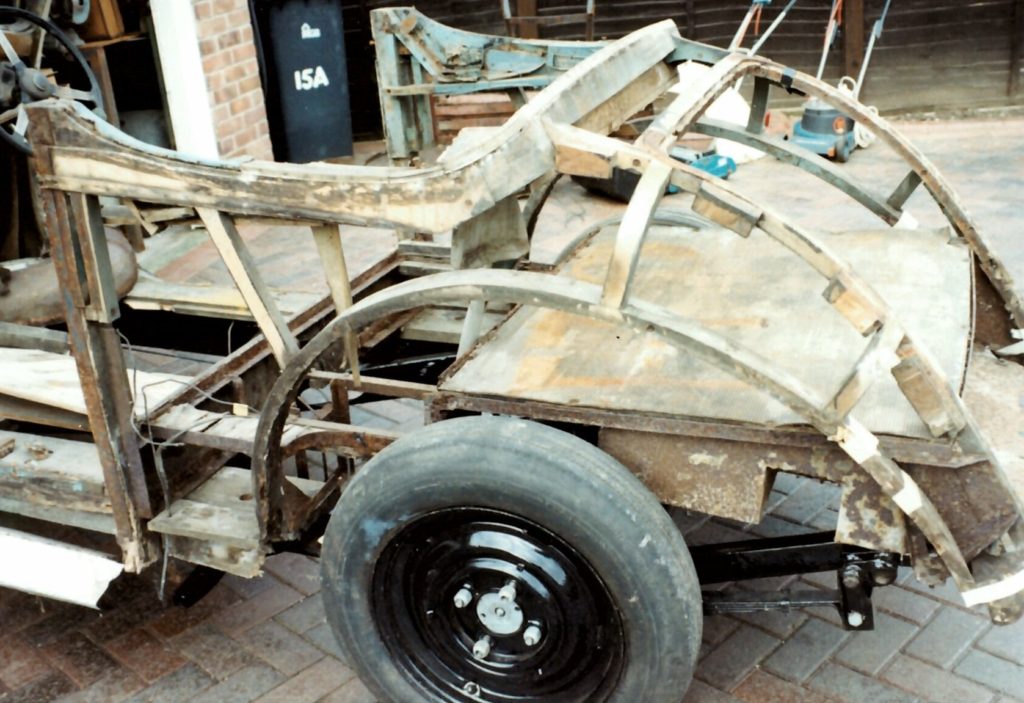
The car eventually met up with its Abbott Bodied sibling when the owner brought it over to Castle Donington and they were photographed together at Donington Park, looking a little bit like “Mr and Mrs” with one being Maroon and Black and this one in Cameron Green and Cream.
One of the most unusual trips the Lanchester made was when the organiser of the Derbyshire Show phoned to say a group of Pole Dancers were looking for a Classic Car to use as a back-drop in an advertising photo shoot. John had to drive the car into a tight space in the downstairs studio. The girls did several costume changes inside, before moving outside to continue the shoot, the idea being they were lost in the countryside with their maps unfolded when John and the Lanchester approached and offered a helping hand. That proved to be an unusual highlight during John’s ownership of the car.
Having restored the car and won a number of awards the time had finally come for it to leave the family and that was when John and Jean contacted JDHT. Having collected the car in December 2022 and given it a fresh MOT we finished off a couple of minor items, including having the rear axle bump straps re-made and re-fitted.
Once the warm summer weather arrived, John and Jean formally handed over the car at Gaydon on Thursday 29 June 2023.
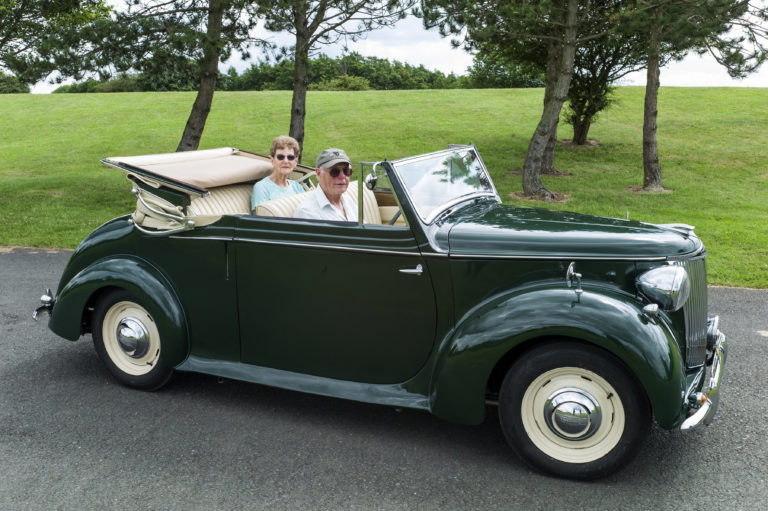
Lanchester LD10 General Information
When the Second World War interrupted lives so dramatically, Daimler had been preparing to launch a new Lanchester Ten, having acquired Lanchester in 1931. This would have been announced for 1940 delivery, but did not appear until 1945 for the following season. The 1946 Lanchester Ten originally had an all-steel body made by the Briggs Company and in keeping perhaps with the times, this was rather plain and austerely finished, with styling that has been compared to that of a London black cab. It was a complete contrast to the large, luxurious cars that Lanchester had once manufactured.
Post-war Lanchesters were regarded as small quality cars that were well built and provided an exceptionally smooth ride through the fluid flywheel and pre-selector gearbox combination favoured by Daimler.
But the problem with the Lanchester Ten was that this level of engineering sophistication made it far too expensive for its target market. It was originally introduced at a basic price of £595 but post-war inflation had increased this to £725 by 1947, and when Purchase Tax (introduced originally in 1940) was added, a Lanchester total came to £927. This was about £200 more than the next-most expensive 10hp cars on the market, and even a 1½ litre Jaguar could be bought for £865. Consequently, when the original Briggs-bodied model was discontinued at the end of 1949 fewer than 2,500 had been made.
The replacement model introduced in 1950 used the same chassis but had a new four-light saloon body built by Barker. In place of all-steel construction this reverted to the traditional coachbuilding technique of metal panels fixed to a timber frame. Many of the body panels were in aluminium to save weight, and the centre pillars were cast in light alloy.
The windscreen was now fixed instead of being hinged at the top but in most other respects the fittings of the Barker-bodied Ten had been improved. Both the fascia and the door cappings were now made of polished walnut, and the leather upholstery was attractively pleated rather than plain. However the price remained high at £927, and the market was again unreceptive; a mere 579 Barker-bodied cars were made before production ceased in June 1951.
The Demise of Lanchester
Lanchesters were now well into their final years, the period summed up by Anthony Bird and Francis Hutton-Stott as “Decline and Daimler” in their excellent book on the marque. A few favoured customers were still permitted to buy cars which were in effect large Daimlers with Lanchester radiators. Thus HRH The Duke of York, later King George VI, was able to have four new straight-eight “Lanchesters” between 1936 and 1940; another Lanchester enthusiast was His Highness The Maharajah Jam Sahib Bahadur of Nawanagar, alias Ranji the Cricketer, who in 1949 took delivery of two special 27 hp Lanchesters with tourer bodies by Vanden Plas.
The last car to be produced in volume and to carry the Lanchester name was announced for the Motor Show of 1950, although it took a year for the car to go into production. This was the Fourteen with a new 2 litre, four-cylinder engine. Three models were offered: The home-market car had a coachbuilt body, the export model known as the Leda had an identical-looking all-steel construction body, and finally there was the De Ville Convertible model with a power-operated hood. But at more than £1,500 for the coachbuilt saloon model the result was predictable – just over 2,000 of these cars were made before production was stopped in November 1953. However the basic design of the car was sound, and fitted with a more powerful 2½ litre six cylinder engine, it became far more successful as the Daimler Conquest.
The basic Fourteen/Conquest chassis was for the 1953 Motor Show with an elegant two-door saloon body by Hooper. This was the Lanchester Dauphin which used the Conquest’s six-cylinder engine and was extremely well-appointed and luxurious in the best Hooper tradition but the price was a resounding £4,010 which made it the most expensive Lanchester ever offered for sale. Not surprisingly, only two were built.
The following year, the Sprite was announced – a 1.5 litre four-door saloon which was the first Daimler or Lanchester car to have unitary body and chassis construction. Another interesting feature was the use of Hobbs automatic transmission in place of the pre-selector. The original Sprite had unattractive, boxy styling and only three prototypes were made before the Sprite Mark II appeared in 1955. This had a much more attractive body with typical Daimler styling. Ten prototypes were built of which one at least survives. But in 1956 Daimler’s top management changed; Sir Bernard Docker was ousted and was succeeded by Edward Turner. An early decision was to drop the Sprite project, as the company could not afford the cost of putting the car into production, estimated at £500,000. And so the Lanchester name disappeared for good from the showrooms.
Lanchester had played an important part in the early-history of the British motor industry, often introducing innovations that others were to follow. Indeed, F W Lanchester conducted some of the earliest development work on a forerunner of the disc brake at a time when car brakes were rudimentary, as well as improving the design and operation of the original Wilson pre-selector gearbox which Daimler adopted. So this Lanchester Ten provides a link, not only with the last years of the company, but also with the very earliest days of the British motor industry.
Registration Mark: LPJ 96
Chassis Number: 60040
Owner: The Jaguar Daimler Heritage Trust